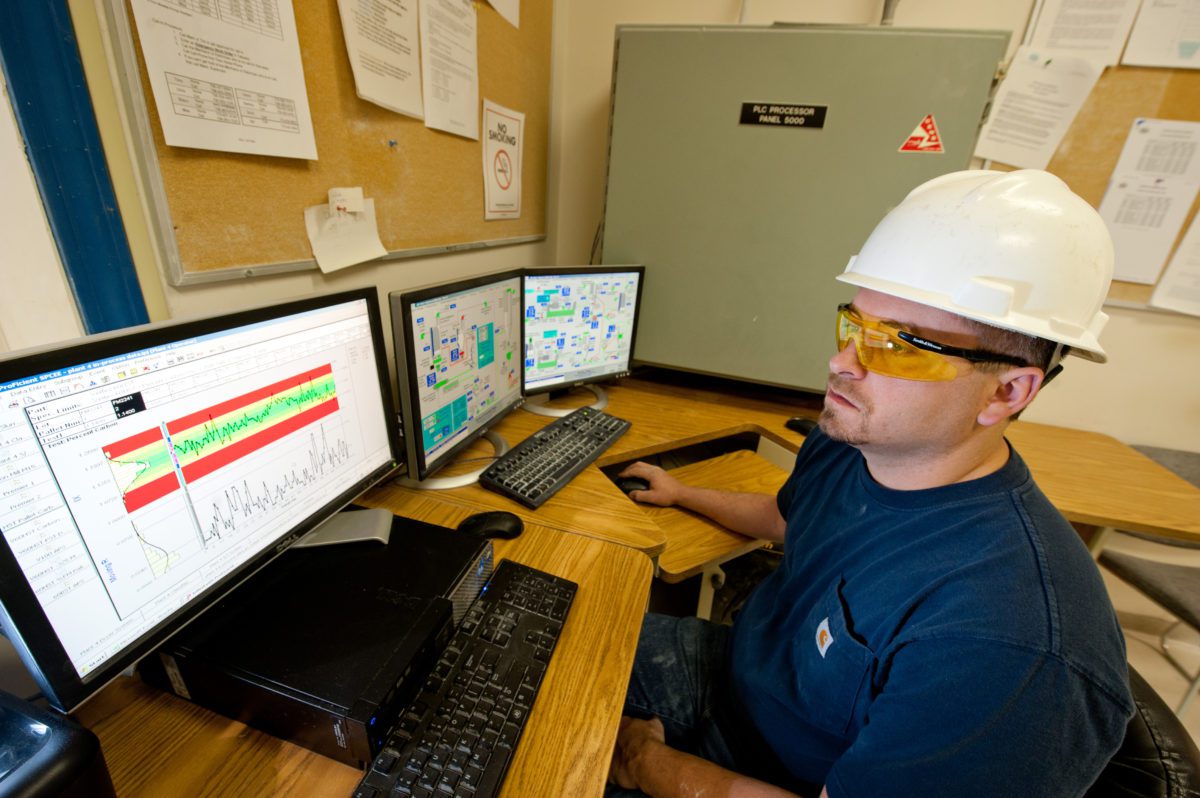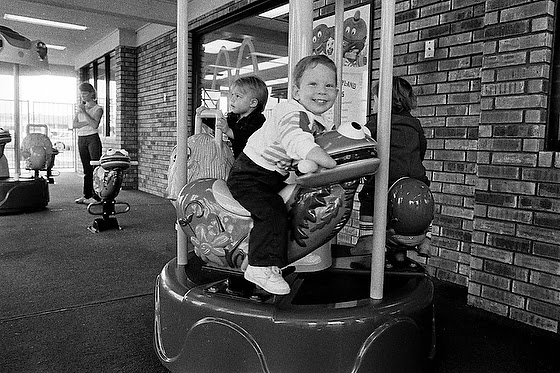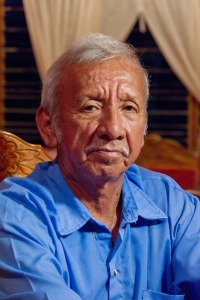An environmental portrait is not something that has to be formal. I captured Philip Newberry, who had lost both legs and arms to spinal meningitis. Little Philip jumped up on the merry-go-round and was having fun and smiling at his parents. I just composed and had a great “environmental portrait.” of Philip.
This photo could also be used as an “environmental portrait” and may work better since I know a little more about Philip’s loss of feet and hands here. It helps tell the story. Again this is not a “Posed Portrait.”
Sometimes you may have to set up a portrait, as I did here in the man’s kitchen. I added a light to help them see his face better.
Think of setting up the photo without the man and then having the man sit down in the image. That is what I did here.
Vertical photo is often the mistake made by new photographers when they have been assigned to make an environmental portrait. Too often, young new photographers think the picture is the orientation.
They must think of their computer, and when they go to set up their page or print it, they remember there are a “Portrait” and a “Landscape” choices. These refer to vertical and horizontal and not a style of photography. For example, you can have a vertical environmental portrait, but it would not be this photo. Here I have eliminated most of the environment so that the surroundings tell us very little about the subject.
By composing the image so tightly around the subject, you have “eliminated” the environment.
Environmental Portrait Tips
- Think first of composing for the environment first. Then, find the angle that best captures the space for which the subject either: works, plays, or lives, for example.
- The environment should be enough to communicate something about the subject.
- Let the subject move in the environment as naturally as they usually will if you are not there. Then, sit and wait and take photos until you have a selection of places where the subject has moved in the frame.
- Look for the “moment” and not just the subject’s location in the frame. The moment is more subtle. For example, the subject may turn their head ever so slightly to the light that the light makes their face glow, or there is an expression that best captures their personality.
- Just remember, people have many traits to their character, and the more you shoot, the better the chances you will have more options to choose from to capture the very best of the person.
- Use off camera flash, turn on a desk lamp or do something to help be sure you have the best light to help communicate more effectively. You don’t want a silhouette of the subject for an environmental portrait.
http://www.stanleylearystoryteller.com/BenHays/_files/iframe.html
Often in print, the space is so scarce that the environmental portrait is the only photo they will use. So you need to capture as much as possible in one picture to help tell a little about the person’s story and introduce them to the audience.
Here is a photo of Philip and Matt Moulthrop, who learned how to turn bowls from Philip’s dad Ed. I wanted to capture pictures of them with their bowls and photos of them making them.
The magazine used my photos in the article. As you can see, sometimes, they need to introduce the person to the audience. The bowls were just as important here, but this was an Alumni magazine package, so the people were the hook for the story.
Sometimes they use your photo as a vertical shot, as they did here for a magazine cover. Notice how this, too, is an environmental portrait.
Here are a few more examples for you and see where I sometimes used artificial light to help the photo.
While this appears to be natural light, it is not. Here is the lighting setup for the man at the desk:
My last suggestion is to use layers in the photograph when possible. Have things in front and behind the subject to create depth.

















